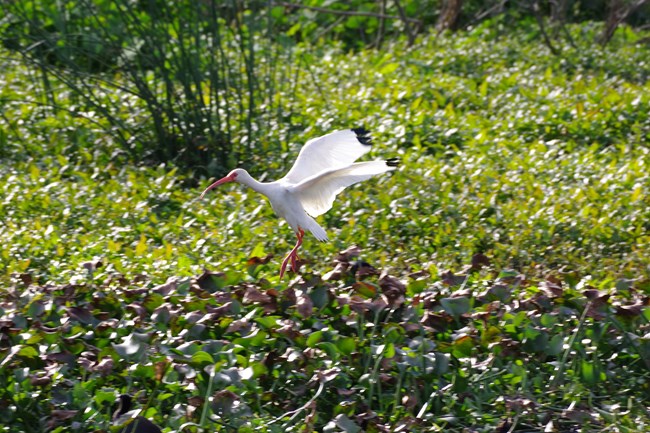
NPS Photo / Soren George-Nichol Eudocimus albusWhite ibises are found along the coastlines of the southeastern United States year-round. They are usually seen by the water, where they forage for food by standing in shallow water and moving their bill side to side and probing along the bottom. They eat a lot of crustaceans such as crawfish and crabs, but can eat a variety of small marine animals from worms to frogs. Davis, W. E., & Jackson, J. A. (2007). Willets kleptoparasitize and use White Ibis as “beaters”. The Wilson Journal of Ornithology, 119(4), 758-760.
Kaufman, K. (2001). Lives of North American Birds. Houghton Mifflin Harcourt. Kushlan, J. A. (1979). Feeding ecology and prey selection in the White Ibis. The Condor, 81(4), 376-389. |
Last updated: May 4, 2021
